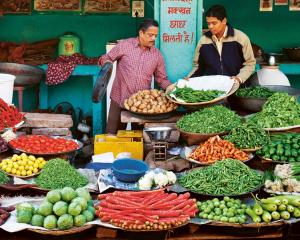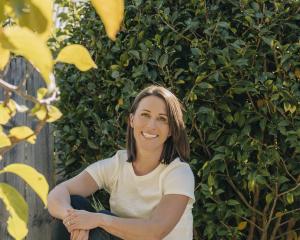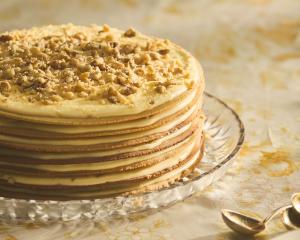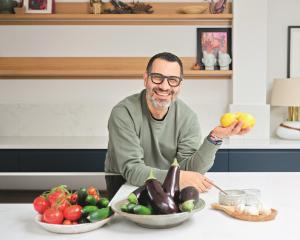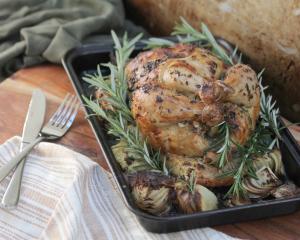For a superfood, currants are one of those berries that seem to slip past people's radar in the annual deluge of summer fruit.
What they may lack in initial sweetness blackcurrants, in particular, make up for with some of the highest nutritional levels and antioxidants found in any food source.
Blackcurrants have been grown in Europe and England for hundreds of years.
Recent nutritional analysis supports the traditional belief in the blackcurrant's health-giving properties and modern research suggests even more benefits than originally thought.
These include maintaining cardiovascular health, vision, urinary and brain health, as well as slowing the effects of degenerative diseases associated with ageing, such as Alzheimer's.
In New Zealand, early colonialists introduced the first cuttings in the 1820s, and by the 1850s New Zealand nurseries were propagating plants for the local market.
Blackcurrants were initially popular because they contained high levels of pectin, which meant that they were perfect for making jams and jellies.
The leaves and stems could be used to make tea, the taste of which remained true to the flavour of the fruit, unlike most other plants.
Early cookbooks and culinary authorities of the day also extolled blackcurrants as a useful ingredient in baking and for adding flavour to savoury dishes and sauces alike.
Blackcurrants can be made into the liqueur cassis, which when added to white wine makes the drink kir and more famously, when mixed with Champagne, kir royal.
Blackcurrant syrup is commonly added to cider in England to make cider and black or with cider and lager to make a dangerous and drinkable brew called snake and black.
I can personally attest to the refreshing nature of the latter enjoyed over several English summers.
For all their uses, most of us come into contact with blackcurrants when growing up through the drink Ribena.
The intense taste of this potent syrup has few equals, but do you know just how easy it is to make it at home? Well it is! Below is a recipe to help you take advantage of those scraggly bushes down the back of Gran's garden.
For a healthy snack, dig out the dehydrator and try your hand at blackcurrant fruit leather, and for afternoon tea, blackcurrant shortcake with pure cream or ice cream.
This simple recipe will knock them out.
If chocolate is your thing, blackcurrant ice cream is the perfect match and will most certainly leave you wanting more.
Bevan and Monique Smith own the award-winning restaurant and cafe Riverstone Kitchen on SH1 in north Otago, just south of the Waitaki Bridge.
www.riverstonekitchen.co.nz
Blackcurrant syrup
1.5kg blackcurrants
600ml cold water
white sugar
Slowly cook the blackcurrants in the water over a low to medium heat until the fruit is very soft.
Strain through a muslin cloth or fine chinois, squeezing out as much juice as possible.
Add 500g of sugar to every 600ml of juice and return to the heat.
Bring to the boil and cook for 3 to 4 minutes.
Pour into sterilised bottles and store in a cool place.
Serve with sparkling or still water or in alcoholic beverages.
250g unsalted butter
250g castor sugar
2 large free-range eggs
370g plain flour
2 tsp baking powder
750g blackcurrants, stalks removed
2.5 Tbsp cornflour
1 cup icing sugar
1 Tbsp vanilla essence
Cream the butter and castor sugar in a mixing bowl until light and fluffy.
Add the eggs, mixing well, then add sifted flour and baking powder.
Mix until combined and turn out on to a floured bench.
Gently knead the mixture until a soft dough is formed.
Divide into two and roll out each half between two sheets of clingfilm to make a circle 30cm in diameter.
Place each pastry sheet in the fridge for 5 minutes to firm up.
Grease and line the base of a 28cm fluted tart tin with a removable base.
Remove pastry from fridge and line the bottom of the tin with one sheet of pastry, plastic removed, reserving the other for the top.
Place blackcurrants into a bowl with icing sugar, vanilla and cornflour.
Mix together and spoon fruit into the pastry-lined tart tin.
Place the second sheet of pastry on top, plastic removed and press down lightly on the edges to seal pastry together.
Remove excess pastry hanging over the side of the tin and lightly brush pie top with water and sprinkle with a handful of castor sugar.
Place into a 170degC oven and bake for 45 minutes to 1 hour until pastry is a deep golden brown.
Remove from oven, allow to cool and serve with pure cream or ice cream.
500g blackcurrants
500g cooking apples, peeled, cored and chopped
juice of 1 lemon
150g liquid honey
Place blackcurrants, apples and lemon juice into a heavy-based pot.
Cook gently until soft and pulpy (about 20 minutes.) Pass mixture through a sieve or mouli into a bowl, add honey and mix well.
Divide puree between two large baking trays lined with baking paper.
Spread out thinly using a spatula, then place trays into a 60degC oven and leave for 12-18 hours.
Leathers are cooked when the puree is completely dry and they easily peel off the paper.
Peel and roll in greaseproof paper and store in an airtight container for up to six months.
750g blackcurrants, stalks removed
225g castor sugar
juice of 1 lemon
375ml cream
Gently heat blackcurrants and sugar in a medium-sized saucepan until juices start to flow.
Remove from heat and pass through a fine sieve or mouli.
Add lemon juice and allow to cool completely in the fridge.
In a separate bowl, lightly whip cream and mix into the cold fruit puree.
Churn in an ice-cream machine and store in plastic containers in the freezer.

